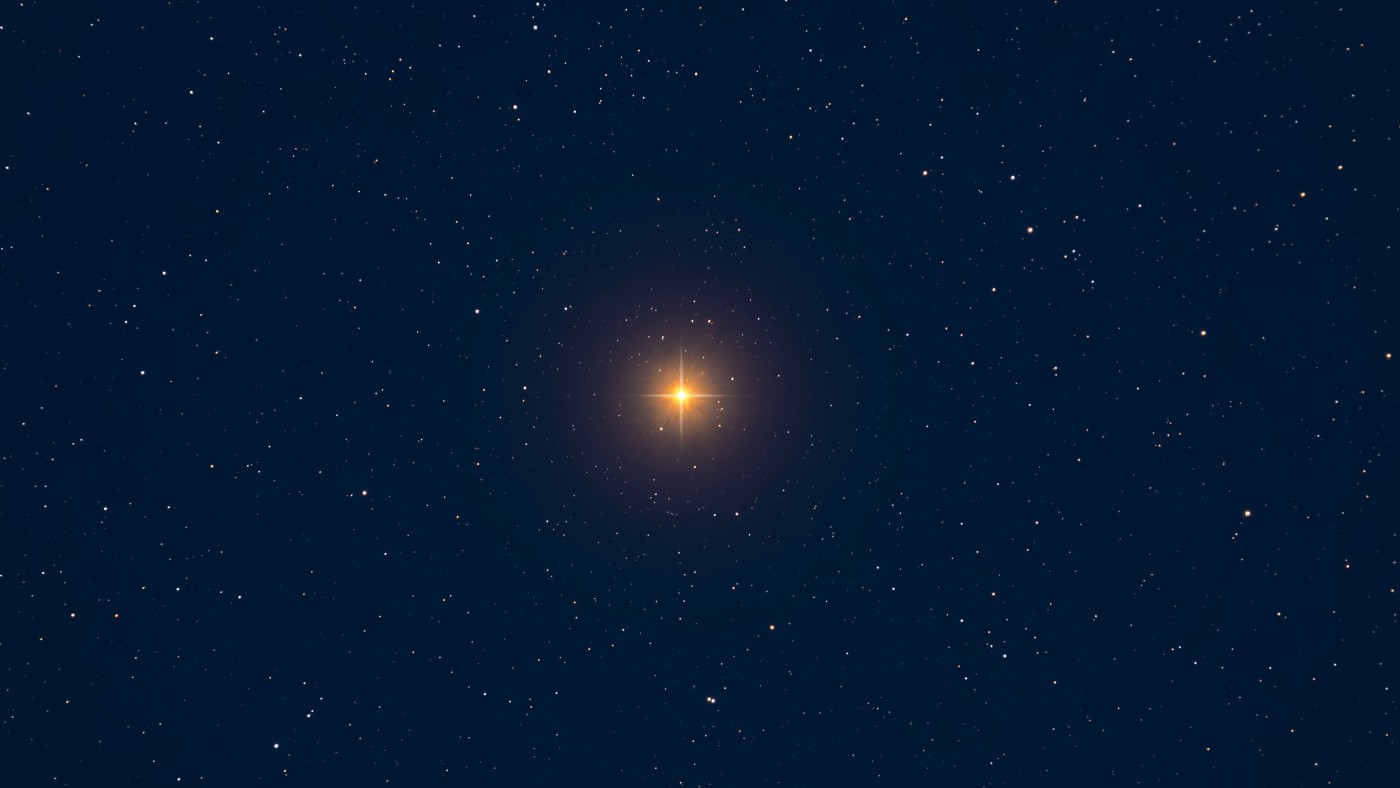Betelgeuse: why star is behaving oddly and what would happen if it exploded
Dimming and then brightening has led to speculation about whether its demise in the form of an explosion is imminent

Albert Zijlstra, professor of astrophysics at the University of Manchester explains how dimming of star in recent years suggests it might go supernova.
The bright, red star Betelgeuse in the constellation Orion has shown some unexpected behaviour. In late 2019 and 2020 it became fainter than we had ever seen it – at least in records going back more than a century. Briefly it became fainter (just about) than Bellatrix, the third brightest star of Orion. This event became known as the “great dimming”.
But Betelgeuse has since become bright again. For a few days this year, it was the brightest star in Orion – brighter than we have ever seen it. Both events led to speculation about whether its demise in the form of an explosion is imminent. But is there any evidence to support this idea? And how would such an explosion affect us here on Earth?
The Week
Escape your echo chamber. Get the facts behind the news, plus analysis from multiple perspectives.

Sign up for The Week's Free Newsletters
From our morning news briefing to a weekly Good News Newsletter, get the best of The Week delivered directly to your inbox.
From our morning news briefing to a weekly Good News Newsletter, get the best of The Week delivered directly to your inbox.
Stars are, by and large, remarkably stable. They shine with the same brightness year after year. But there are exceptions and some stars – dubbed variable stars – change in brightness. Most famous is Mira, the “star of wonder”, which was discovered as a variable star by the German pastor David Fabricius in 1596 – it is a pulsating star which regularly expands and contracts.
Algol is another well known example: it is periodically eclipsed by a companion star. There are around 30 such variable stars visible with the naked eye, although it requires care to notice their variation in brightness.
Betelgeuse, the seventh brightest star in the sky (discounting the Sun), is the brightest of the variable stars. Sometimes Betelgeuse becomes nearly as bright as Rigel (the blue fourth brightest star in the constellation), while at other times it is notably fainter. The variation is caused by pulsations, similar to those of Mira although not as large or as regular.
Sometimes, however, a star can briefly become extremely bright. The brightest and rarest among those are the supernovas, formed when an entire star ends its life in a powerful explosion.
A free daily email with the biggest news stories of the day – and the best features from TheWeek.com
Supernovas can be bright enough to be visible during the day, although that has only happened a few times in the past 1,000 years. A nearby, bright supernova is the kind of event astronomers live for – but which few of us will ever get to see. We live in hope.
Mysterious behaviour
Although Betelgeuse is a variable star, the great dimming in 2021 was extreme. Within months, it had in fact dimmed by about 60%. This was eventually shown to be caused by a cloud. Stars such as Betelgeuse are continuously expelling gas and dust. A clump of gas in the wind, as large as the star itself, was obscuring half the star. In fact, images of the star showed the southern half of it to be missing. It appears that some stars, like Betelgeuse, have weather.
That said, we still don’t know what caused the sudden brightening – it is now 50% brighter than usual. But an impending supernova doesn’t seem that likely. In these kinds of stars, a supernova explosion is triggered in the core. Brightness variations, on the other hand, are a surface phenomenon.
The extreme brightening may in fact be due to the same dust cloud that caused the dimming, now reflecting light from the star towards us and making it appear brighter.
But we can’t be sure, and astronomers are excited. Betelgeuse is about 15 to 20 times more massive than the Sun, and stars of this mass are expected to end their lives in a powerful explosion known as a supernova. Betelgeuse’s red colour shows it is a red supergiant, meaning it’s already approaching the end of its life.
But that end may still be a million years away. Stars like Betelgeuse can live in excess of 10 million years – a very brief period to astronomers, but a very long time to anyone else.
Despite this, new models have been run, with some suggesting that a supernova could happen within a few thousand years, while others put this event at 1.5 million years into the future.
There are many mysteries around Betelgeuse. We don’t know its precise mass – and even its distance is disputed. It is argued that the star merged with a smaller companion recently: this would explain why it rotates faster than expected – large stars usually do.
Some ancient manuscripts refer to the star as similar to yellow-ish Saturn, rather than ruddy Mars. Has the star changed colour? That could point at fast evolution – meaning a supernova may happen sooner rather than later.
Explosion dynamics
If Betelgeuse does go supernova, what would it look like? The star is around 500 light years away. Following an explosion, we first would detect a rain of massless particles called neutrinos, which would be harmless to us. After that, the star would quickly brighten.
After one or two weeks it would shine with about the same brightness as the full Moon. Betelgeuse would then fade over the next several months but remain visible in the day time for six to 12 months. At night, you should be able to see it with the naked eye for another one or two years. But after that, we would never see it again – Orion would forever lose its red sparkle.
Is there any danger to us? Supernovas produce high energy particles called cosmic rays, which can get past the shield of the Earth’s magnetic field. But the amounts would be small compared to other radiation we receive for all but the nearest supernovas.
A supernova explosion would also create radioactive iron. In fact this substance has been found in Earth’s seabed and on the Moon, believed to have formed in a supernova explosion between 2 and 3 million years ago. That supernova was perhaps 300 light years from us, closer than Betelgeuse, but far enough to cause no major problems for life on Earth.
A very close supernova, closer than 30 light years, could cause major problems: the cosmic rays could cause ozone destruction and dangerous UV levels on Earth. It could reduce ozone by half over a period lasting hundred to thousands of years: this level is considered capable of causing an extinction event. But such a close supernova would be very rare, and may happen only once per billion years.
Ultimately, Betelgeuse may still be around for some time. And that’s good, as it is a fascinating and mysterious star. We still have a lot to learn from it.
Albert Zijlstra, Professor of Astrophysics, University of Manchester
This article is republished from The Conversation under a Creative Commons license. Read the original article.
-
 Zimbabwe’s driving crisis
Zimbabwe’s driving crisisUnder the Radar Southern African nation is experiencing a ‘public health disaster’ with one of the highest road fatality rates in the world
-
 The Mint’s 250th anniversary coins face a whitewashing controversy
The Mint’s 250th anniversary coins face a whitewashing controversyThe Explainer The designs omitted several notable moments for civil rights and women’s rights
-
 ‘If regulators nix the rail merger, supply chain inefficiency will persist’
‘If regulators nix the rail merger, supply chain inefficiency will persist’Instant Opinion Opinion, comment and editorials of the day
-
 Why measles is threatening children right across the UK
Why measles is threatening children right across the UKfeature The UK lost its measles-free status in 2019, indicating that the measles virus was circulating and there was inadequate vaccination to prevent its spread
-
 ‘Boil in a bag’ funeral and other alternatives to burial and cremation
‘Boil in a bag’ funeral and other alternatives to burial and cremationIn Depth Water cremation will be available in the UK later this year – the first new legal funeral option since 1902
-
 Thousands of people in UK out of work due to long Covid
Thousands of people in UK out of work due to long Covidfeature New data suggests 0.5% of total economic inactivity in working-age population of non-students due to long Covid
-
 The surprising link between hay fever and your gut bacteria
The surprising link between hay fever and your gut bacteriafeature New research suggests probiotics could help sufferers beat the worst of the seasonal symptoms
-
 Sanofi: the new protein-based Covid vaccine to be used in the UK
Sanofi: the new protein-based Covid vaccine to be used in the UKfeature Protein-based vaccines have been safely used for years against hep B, flu and shingles
-
 Why the future of Covid is now harder to predict
Why the future of Covid is now harder to predictfeature The question of how the pandemic will be felt in 2023 is in some ways impossible to answer
-
 Tomato flu: symptoms, transmission and what might be causing it
Tomato flu: symptoms, transmission and what might be causing itfeature Doctors think the unusual tomato-shaped rash might have a link to the Covid virus
-
 How to cool down in a heat wave – what the science says
How to cool down in a heat wave – what the science saysfeature As UK temperatures soar, here are some research-backed tips for staying safe